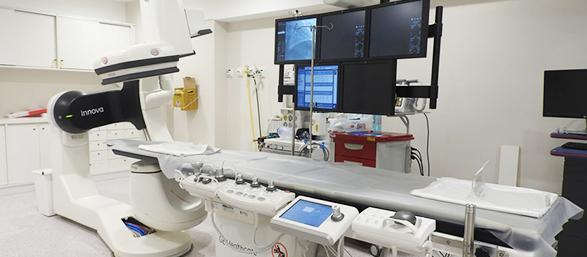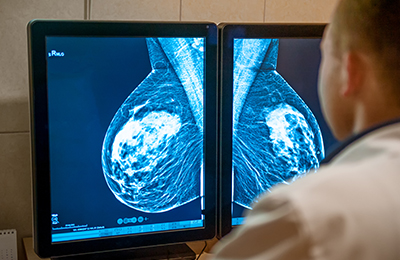

3 Technologies Revolutionising Spinal Surgery.
New innovations have continued to advance surgery – especially within the spinal space.
Because of this, the spinal surgery is improving for both the surgeons who perform it and the patients being treated. In this article, I’ll highlight the revolutionary technology that is driving this change and shaping the future of the space.
Artificial Intelligence
Artificial intelligence (AI) is a ‘buzzword’ that’s circulated the med-tech market for some time now. However, in the spinal surgery space, it is truly being harnessed to improve healthcare efficiencies within the preoperative stage of care, leading to better patient outcomes.
Aidoc, an Israeli AI-powered radiology solutions company, offers an FDA cleared AI solution to triage cervical spine fracture patients. The AI solution prioritises vital cases, improves workflow and efficiency in treating critical patients. This helps decrease the level of ‘burnout’ experienced by radiologists during the planning and documentation stages of the spinal surgery process. In turn, this leads to more accurate surgery preparations and better patient outcomes.
Adioc are not the only company to be providing this important type of AI-powered technology. You can read about more in this article about multiple, innovative Nordic start-ups.
Surgical Robotics
Like the preoperative stage, spinal surgeries need to be extremely accurate. This has motivated the entrance of surgical robotics to the space, which are highly accurate and not prone to the human error that occurs with ‘burnout’ surgeons.
Medtronic - a global leader in medical technology, services and solutions - has developed a robotic guidance system that offers advanced surgical planning software and surgical navigational. Its Mazor X Stealth Edition offers features such as customisable implant selection, optimal implant trajectories and 3D analytics (which allows for a more predictable procedure).
On top of this, the precise robotic navigation offers accurate guidance during the operation. This is achieved by aligning robotics arms into the pre-planned trajectory of the intended implants, based on pre-operative processes such as X-rays and CT scans, allowing surgical instrumentation to be used cohesively with the arm to perform the implant.
This type of technology is set to offer countless benefits from the planning stages of operations, right through to the surgery itself. The high levels of accuracy allow customisable approaches for each patient as shown through the ability to edit screw thickness depending on 3D imaging and using navigation technology to assist in the surgery itself.
Medtronic are not alone in this space. The ‘Loop-X’ mobile imaging robot made by Brainlab offers similar benefits that enhance surgical workflow using robotics and imagery to transform the spinal surgery sector.
AR & VR
Augmented reality (AR) is another innovation that lends itself to aiding in minimally-invasive spine procedures.
By using this approach to spinal surgery, patients are proven to benefit from reduced postoperative pain, shortened hospital stays, reduced blood loss and minimised soft tissue damage and scar tissue.
The process works similarly to that of the navigational benefits of robotics. By using augmented reality, surgical navigation helps surgeons place pedicle screws in accurate and safe positions.
Royal Philips, a global leader in health technology, developed ClarifEye Augmented Reality Surgical Navigation to advance minimally-invasive spine procedures. The image-guided therapy solution combines imaging and AR navigation into one system. The 3D visualization technology provides live feedback for accurate spine procedures.
The benefits of such technology drastically increase clinical accuracy. Patients are therefore subject to fewer revision surgeries compared to the current standards.
Although not actively used in the surgery process itself, virtual reality (VR) has also offered benefits when it comes to the simulation and educational aspects of the surgical space. The technology can artificially integrate virtual images that overlay with real-time locational data of surgical instruments. With spinal surgery being such a complex procedure, using new technological advancements such as VR will offer a level of training that was previously unavailable.
In Conclusion
All this technology is revolutionising the spinal surgery space, as it continues to be increasingly adopted. We are now experiencing new levels of precision and accuracy, which are making complex spinal surgery safer and more reliable.
These developments create benefits for both surgeon and patient and all together allow for a more efficient process. Over the long-term, the technology will help to save operational costs which could present major persuasion for more healthcare companies to take the plunge into this type of technology.
If you'd like to discuss any of these technologies with me more or talk about the recruitment service that CM Medical offer, then please email me at cory.shaw@medical-cm.com.
For more content like this, visit my consultant page.
Recommended.

What Does Consumer Neurotech Innovation Mean for the Medical Device Industry?
Integrating systems into the human brain to control our everyday devices may seem very ‘Black Mirror’, but thanks to modern neurotechnology it's quickly becoming reality. Click to find out more.

How to Master Reimbursement in Medical Devices & Biotech.
In this live webinar, hosted by CM Medical, we went in search of expert reimbursement advice - speaking to Deborah Rizzi and Steven Haken of Odelle Technology.

How to Stand Out in a Saturated AI & Medical Imaging Market.
We asked an expert at an innovative medical imaging start-up about how they had overcome this challenge. Click now and listen to what they said.

Comments.